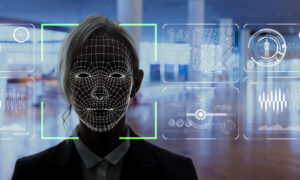
Video analytics are in high demand at airports. With so many cameras to monitor, video surveillance that works with advanced video analytics to proactively identify potential threats is critical to the success of a security plan. Furthermore, these technologies can help operators identify the most critical information at any given time.
Powered by sophisticated, computer-based algorithms, these advanced analytics incorporate neural networks and deep learning to imitate a human’s ability to recognize, allowing the technology to adapt to and learn from new situations. These innovations open up new doors to airports because they can deliver the accuracy and scalability required to support advanced recognition in real-world environments with heavy traffic and diverse populations, rather than relying on one-to-one scenarios.
Airports are a notoriously difficult environment for traditional analytics to work well. However, nowadays with machine learning-based analytics things are changing.
Machine-learning based analytics are capable of learning what is “normal” in a scene over time and raising an alert when something is out of the ordinary, such as people going the wrong way, bags left unattended for a period of time, etc. This is making it much more valuable. These analytics may also be able to identify behaviors/anomalies in the scene that had previously gone unnoticed, which could be useful for airport security or even for operational efficiencies.
Video analytics can be configured to recognize changes in speed (running), shape (crouching) or aspect ratio (falling), all of which can be very beneficial to airports.
With the recent addition of machine learning capabilities IP cameras can now be trained to recognize objects or situations that matter most to airport customers. This is important considering that in today’s market there is no ‘one-size-fits-all’ when it comes to protecting people and property or delivering data for business intelligence. Now video cameras can be taught to recognize and detect stationary objects or certain situations instead of being triggered by motion alone. With this, video metadata is further enriched and delivers data when objects are present, but also once they have been removed, therefore providing more informative data.
1. More accurate face recognition

The advancements in machine learning and artificial intelligence (AI) are enabling analytics like face recognition to deliver highly accurate, mission-critical security applications like airports.
Greater accuracy in facial recognition is obviously very beneficial at airports where correct identification of passengers, staff, etc., is critical. Some airports/airlines have already started using facial recognition to identify passengers boarding flights, while others are using it as a biometric for access to restricted areas at the airport.
Face recognition is also being used as another form of authentication for border control, passport and security access; tracking of black- and white-list individuals; speedy clearance in congested places; and real-time matching.
2. How airports benefit from analytics on the edge

Video analytics at the edge allows every network video surveillance camera to be smart and understand what it sees. In an airport environment, this allows for operators, security staff and other users to be alerted to potential threats or situations the moment they happen.
Improved camera technology and advancements in analytics have made analytics at the edge a more viable option. At airports, edge analytics can, for example, detect counter flow on an escalator or a group forming in unusual places or a person or car near the perimeter fence.
Built-in video analytics allows users to retrieve the right footage from hours of stored video instantly, analyze the scene by providing all kinds of statistics (metadata), and take appropriate action faster, easier and more efficiently.
With built-in video analytics it is possible to set certain alarm rules, such as someone approaching or climbing over a fence, someone loitering at the parking lot, or objects left behind in a certain area like a box blocking the emergency exit. Operators in the control room will be alerted the moment one of these alarm rules is met.
This is different to what can already be detected today. When data of multiple cameras is aggregated statistics like counting metrics, crowd density and other information can be used to inform passengers about waiting times, or other relevant information beyond security.
Source: a&s Magazine



































































